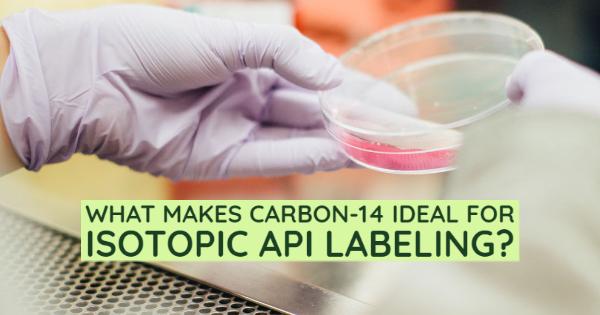Each element can exist as two or more isotopes that differ in the number of neutrons in the nucleus. Isotopic labeling is a technique used by chemists to track the passage of an isoptic through a reaction, cell, or a metabolic pathway. The reactant is labeled by replacing specific atoms in the isotope to make it easier to follow and track.

There are many ways to detect the presence of labeling isotopes including their radioactive decay, vibrational mode, and mass. However, the isotopic labeling of active pharmaceutical ingredients (APIs) has become more challenging in recent years due to the complexity of API syntheses.
What goes into the isotopic labeling process of APIs?
Active pharmaceutical ingredients are best labeled by an isotope chemist with prior knowledge of the API. This ensures that a metabolically stable labeling position can and will be selected.
The incorporation of the isotopic label is best performed at the last step. If it can't be performed at the last step, it ought to be done as near to the end of the synthesis as possible. This is because the isoptic label has the potential to accelerate the synthesis, which makes it more cost-effective from a client's perspective.
What are the challenges of radiolabeling?
Many challenges are presented to isotope chemists when working with radiolabelled compounds. This is because working with radiolabelled compounds imposes specific constraints on the transport and availability of the materials.
Working with radiolabelled compounds also imposes constraints on the reconciliation and tracking of activity, waste disposal, and more. What's more, isotope chemists need to be mindful of the most cost-effective synthetic strategy throughout this process.
Why use carbon-14 during the process?
Carbon-14 is a low-energy beta emitter that requires limited shielding and has a half-life of about 5,700 years. Because of these characteristics, carbon-14 is considered the ideal radiolabel of choice. This is especially true for radiolabeling in tissue distribution studies in humans and obtaining quantitative mass balance data.
However, a single carbon-14 label's maximum specific activity can't exceed the theoretical value of 62.4 mCi/mmol. Fortunately, this value can be useful when it comes to traveling the radiochemical purity of intermediates throughout the carbon-14 labeling, or 14c labeling, process.
Looking for 14c labeling? Custom radiolabeling services like Moravek can provide 14c labeling for GMP storage conditions and GMP API manufacturing. For more information on carbon-14 and 14c labeling for API, contact Moravek today.
